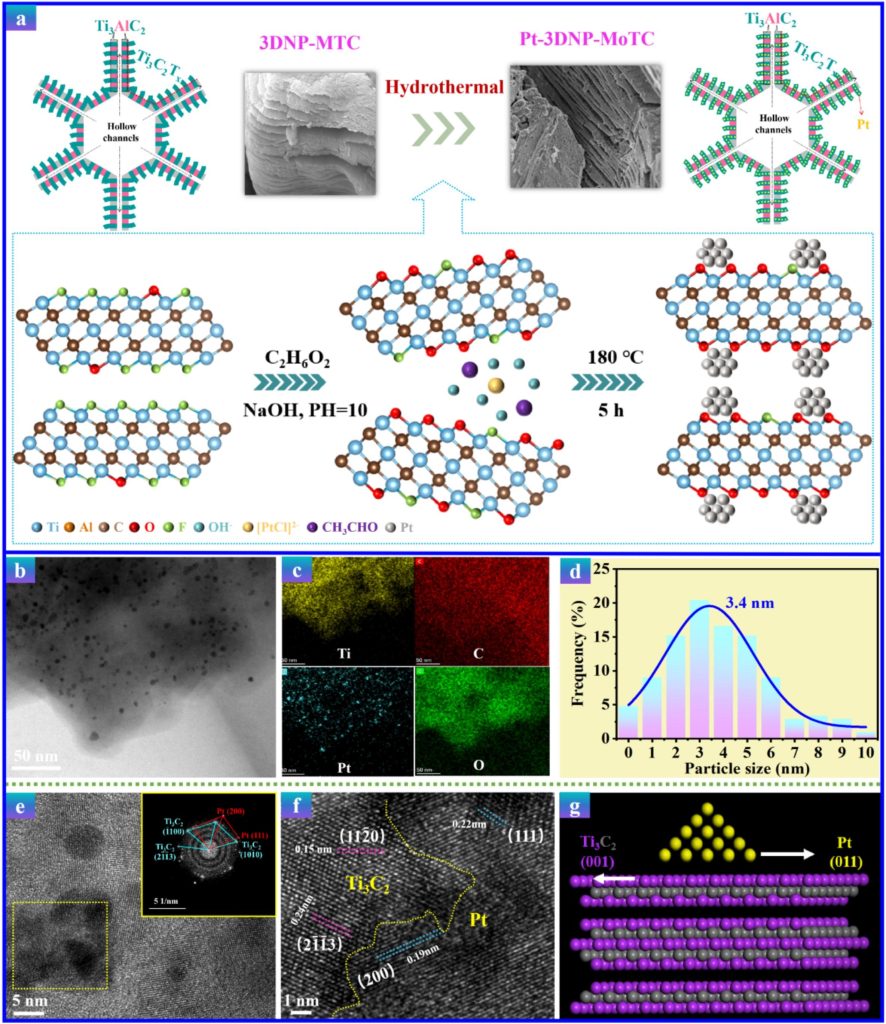Author: Li Tian ab1, Tao Hu c1, Yawen Guo d, Peng Ju e, Xiujuan Chen ae, Yueming Li f ,
Xuedong Bai b, Guorui Zhao a
Journal: Journal of Colloid and Interface Science
DOI: https://doi.org/10.1016/j.jcis.2024.09.215
Abstract / 摘要
The design of self-supporting structure is particularly important to improve the stability and electrochemical performance of hydrogen evolution reaction electrode. Here, a facile strategy for building novel ultra-stable 0D-2D-3D integrated self-supporting electrode with high conductivity, sufficient diffusion channels and large reactive surface area was proposed. In the heterostructure, 2D Ti3C2Tx flakes in-situ synthesized on 3D network porous Ti3AlC2 surface which provides the multiple reactive surface areas and aggregation resistance to facilitating 0D ultrafine Pt nanoparticles uniform anchorage. Combined with structural characterization and first-principles calculations revealed that, the highly dispersed ultrafine Pt synergistically coupling strong metal-support interactions creates a unique multifunctional catalytic interface with high stability and atomic utilization efficiency of Pt to promote the HER in acidic and seawater. The resultant self-supporting electrode (support 0.48 wt% Pt) exhibits much superior activity to 10 % commercial Pt/C (loaded on foam nickel) in 0.5 M H2SO4 (55 mV@10 mA cm−2) and simulate seawater (196 mV@10 mA cm−2) while reducing the Pt usage by 15 times. Meanwhile, the electrode also illustrates outstanding stability under high current densities (100 h@100 mA cm−2). This study provides a new design idea for developing integrated self-supporting catalytic electrodes to meet the durability of hydrogen evolution reaction applications in harsh environments.
Keyword / 关键词
Electrocatalysis; HER; Self-supporting electrode; Ti3AlC2Ti3C2Tx; Density functional theory

